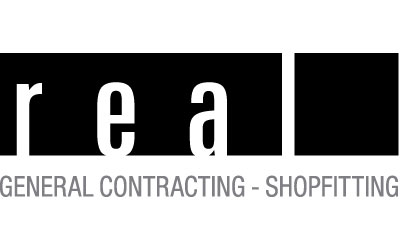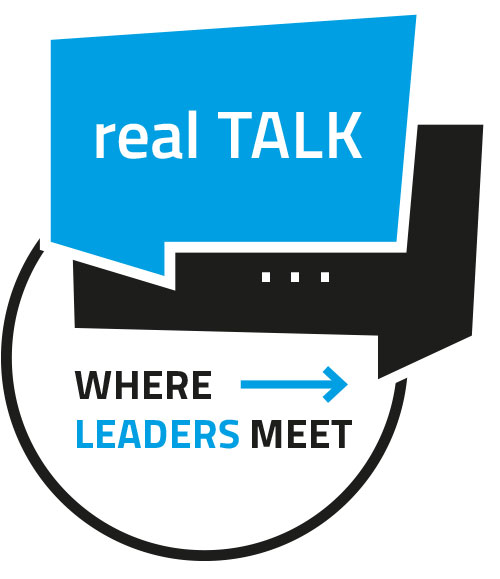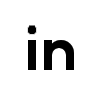We talk to Matthias Wolk, expert for virtual platforms and digital formats. His company VRtual X stands for innovative developments in the fields of virtual and augmented reality. As one of the pioneers, the Hamburg native specializes in the development of immersive projects.
red. Mr. Wolk, let’s start with three definitions or delimitations for our readers that are as concise as possible: Virtual Reality. Augmented Reality. And what does the term immersion encompass?
Wolk. The notion of immersion, or being “immersed” in the world, is at the core of what we do. In virtual reality, you immerse yourself completely in a virtual world; with augmented reality, on the other hand, you extend the real world with digital and virtual content. For a VR experience I need virtual reality goggles, an augmented reality experience all I need is a smartphone, a tablet or special AR goggles, such as the Microsoft Holo Lense. Finally, Extented Reality (XR) is the umbrella term for immersive, technology-based experiences that allow users to experience new forms of reality.
red. You specialize in virtual trade shows and digital events with VRtual X. Vocation or is that due to the unpredictable times?
Wolk. Actually, we came to it a bit like the virgin to the child. When, at the beginning of the pandemic, a lot of virtual reality orders fell away overnight, we didn’t bury our heads in the sand, but kept going and rolled up our sleeves. We asked ourselves the question: what digital products are needed in a time when people can no longer meet at all, or only with considerable limitations. Fortunately, we already had our own software solution Lea X in the drawer. We then launched this software for virtual trade fairs and events with great success.
red. From your experience, which industries are currently already benefiting the most from the possibilities of virtual reality and immersive projects?
Wolk. In the B2B sector in particular, it is becoming clear that virtual technologies and content have long since ceased to be hype and have already become part of everyday life. Virtual reality is ideally suited, for example, for the development, visualization or maintenance of real estate. Or when it comes to learning and comprehension: as virtual trainings, instructions or simulations. This can include the area of occupational health and safety, but virtual reality also achieves clear and meaningful added value in the training and onboarding of new employees on industrial machines. In the maritime industry, for example, in engineering or mechanical engineering, the players are already benefiting from remote work, e.g. via augmented reality.
red. From our point of view, there are events that suffer from pure virtuality. Examples are networking meetings or trade shows where haptic interaction is relevant. In your view, which events run well or even better digitally?
Wolk. Absolutely right. For some event formats, virtual implementations are only successful to a limited extent. For example, the past two years have shown that large trade shows with several thousand participants do not work optimally. It’s highly likely that these trade shows didn’t really work in the real world before, but people didn’t notice because there was no reliable data or evaluation and the subjective feeling of “that was a great trade show” prevailed. The measurability of virtual formats is both a curse and a blessing. A number of events then also run much better in the digital world than in the real one: Trade conventions, panel formats, sales or product events. We get a high level of satisfaction from our customers, because the companies can implement a higher frequency of events with their own virtual platforms and at the same time reach their partners and customers in a precise and targeted manner, and virtual formats are significantly more sustainable than real ones.
red. Could the business and communications world coming our way be compared to cinema and Netflix? The pure film is the same, but the event, the experience and the impact are quite different?
Wolk. This comparison is interesting, but lags a bit. A feature film is subject to different dramaturgs, suspense arcs and storylines than a successful Netflix series. The film technology behind it is the same, but the content is produced specifically for the respective playout channel.
The impact of virtual worlds is much broader than the real world can offer. Because we can go to places that no longer exist, for example. Or to places that will never exist either. It will be exciting when we integrate the virtual worlds into real events and offer true hybrid formats that go far beyond a “we’ll do a live stream on top of that” approach.
red. A political question: A society that is increasingly indulging in staging could lose touch with reality. Do you also see sustainable risks for humanity in the ever-increasing virtualization?
Wolk. Where there are great opportunities, there are always risks as well, that’s for sure. To minimize these, we should continue to use the best of both worlds in the future and, as software and content producers, responsibly ask ourselves the questions: What is the added value of a virtual experience? Does the application really make sense and are the opportunities greater than the risks? A sensible mix of real and virtual world should be the answer.
red. As real Group, we are experts in the expansion of commercial real estate. Do you have a prime example of how our industry can benefit from your services?
Wolk. In the real estate segment, you can’t get by with a prime example; there are too many different best cases for that. For example, we use virtual reality in the planning of commercial real estate. This starts with the planning of the object (generative design), 360° views of various prototypes. This allows the project developer, together with the customer, to virtually design the property and walk through it without even laying a single brick. Logistics and production processes can be simulated and optimized in VR, lighting situations can be played through and the machinery can be set up in advance. The options are diverse and useful and actually require their own interview.
red. With “Lea X” you have launched a virtual event platform. Please briefly outline what it is all about.
Wolk. With Lea X, we offer a Software as a Service solution (SaaS) for virtual showrooms, virtual company representations (digital twins) or virtual events. Meanwhile, well over 100 projects and formats have been implemented with Lea X, nationally and internationally. The software convinces by its easy usability, a very high and sophisticated graphical implementation and its data security (DSGVO compliant). More information can be found at www.lea-x.com.
red. “Safety X” is a form of virtual reality that can avoid objective dangers to life and limb. Can you describe an application where there is no way around VR in a meaningful way?
Wolk. The “Safety X” application is a VR solution in the area of occupational safety and instruction. Originally, “Safety X” consisted of individual virtual reality projects that we implemented for and together with our customers. We quickly realized that there is an enormous demand on the market for this type of VR application. Based on our experience and expertise, we are currently developing our own VR software under the brand “Enter XR”. With this, we are creating a modular and scalable software solution that can be used by companies as a SaaS solution. So in the future, training will take place in virtual reality, and blended learning will also play a relevant role. The advantages of “Enter XR” are obvious: VR instruction can be offered more cost-effectively while maintaining very high quality. The trainings can be used location-independently, remotely and 24/7 with a constant teaching level. In addition, we also work here with artificial intelligence in the data evaluation, for example, to prove training progress, to optimize processes or to analyze the training sessions for trainers and trainees again in the follow-up.
A good case where VR is indispensable, so to speak, is fire evacuation. Here, we can set a building under fire and smoke in the virtual world in such a way that the trainees experience this dangerous situation in real life, without it actually burning. Escape routes can be run and tasks completed (performance control). So people have real experiences in the virtual world and they understand. All this is not possible with a boring PowerPoint presentation.
red. Please explain your 360° productions. What is it and who benefits most from it?
Wolk. With our 360° photo or video productions, we depict the world as you would find it in real life, virtually unadorned and unvarnished. This has the advantage of a very high degree of authenticity. We can supplement this 360° content with additional interactive content (photo galleries, 2D videos, video chat tools, etc.). Such 360° productions find their useful application e.g. in company tours, visualization of process chains, presentation of real estate, museums or exhibitions, up to impressive 360° films from the ISS space station.
The advantage of 360° productions is that they are comparatively easy and inexpensive to produce. Whereby an ISS 360° production is somewhat more expensive.
red. What is it about your scent experience?
Wolk. With our scent experience “Sense X,” we’re going one step further in terms of immersion and integrating another sensitive component. We all know how smells and scents can be used to evoke memories, i.e. experiences. For example, when I smell freshly mowed grass, I always think of my father in the garden, mowing the lawn on Saturday. With this very special property of scents, we extend virtual experiences. In practice, what this looks like is that we put a small, special scent mask under the VR goggles. Our software programs control these scents digitally, so that, for example, the scent intensity of a blooming rose becomes stronger when I move toward the flower in VR and weaker again when I remove my nose.
With “Sense X” we are still at the very beginning, but the prototypes show that we are taking another immersive step for virtual experience.
red. May I ask you a few personal questions?
Wolk. I’d be happy to, anytime.
red. What would you describe as your favorite dish?
Wolk. If I knew how many spaghetti pesto plates I’ve eaten in my life, I could also put numbers to what my favorite dish is. Then, when a créme brûlée is served with a perfect espresso for dessert, all is right with the world.
red. What is perfect happiness for you?
Wolk. Perfect happiness, that’s my experience after 51 years, is always temporary, and that’s a good thing. For me, it’s a moment of absolute contentment. I consciously create these moments and take time for them. Mostly after a successful project or a successful day, when I can then enjoy the calm after the storm – ideally together with my family by the sea.
red. Please recommend a very good film and tell us why you think it should be seen.
Wolk. Actually, I currently recommend the 360° experience “Space Explorer – the ISS experience.” An impressive and highly immersive 360° documentary about life on the space station by the multi-award winning production studio of Felix & Paul from Montreal. In the meantime, you can see the second episode not only in the Hamburg Planetarium, but also on VR glasses thanks to our idea and initiative. A more than impressive virtual journey.
red. In conclusion: Do you have a life motto and share it with us?
Wolk. I’m like my grandmother on that one: “There’s nothing good unless you do it.”
red. Mr. Wolk, thank you very much for the interview.
Wolk. You’re very welcome, anytime. Thank you for your time.




